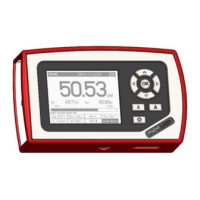5.1 Choosing the right Sensor
5 Measurement Considerations
5.1 Choosing the right Sensor
The question of the right sensor depends on many factors starting with the light
source to measure and the application. No sensor can cover all applications; the
following table shows the main pros and contras of the different power sensor types.
Of course this can only be a rough guide because within each sensor group there
are special models best suitable for specific applications.
Power Sensors:
Photodiode Thermal
Light Source Si Ge InGaAs BB HTC Volume
Diode UV - NIR +++ + - ++ - -
Diode NIR - + +++ ++ - -
High Power
Fiber Lasers
- - ++ ++ ++ -
ASE sources - - ++ ++ - -
fs Laser - + ++ ++ + -
Gas Laser ++ - - ++ + -
Excimer - - - - +++ +
YAG - - - - + +++
LED + - - +++ + -
5.2 Reducing Noise for High Accuracy Measurements
Main disturbing influence on each measurement is noise from grounding, the cable
capacitance, temperature effects, stray and ambient light and detector noise.
- The housing of power sensors are connected to the digital ground of the meter
and should be linked to earth ground (e.g. via a post); energy sensors should
be mounted isolated, because the housing is connected to the meter analog
ground.
- The sensor cable must handle very small current or voltage signals. Moving
the cable will induce disturbances given through the cable capacitance. For
measuring small power or energy levels the cable should be fixed in position.
- With photodiode sensors the bandwidth should be set to ‘LOW’ setting; with
thermal sensors the acceleration circuit should be shut off or set to ‘AUTO’.
32

